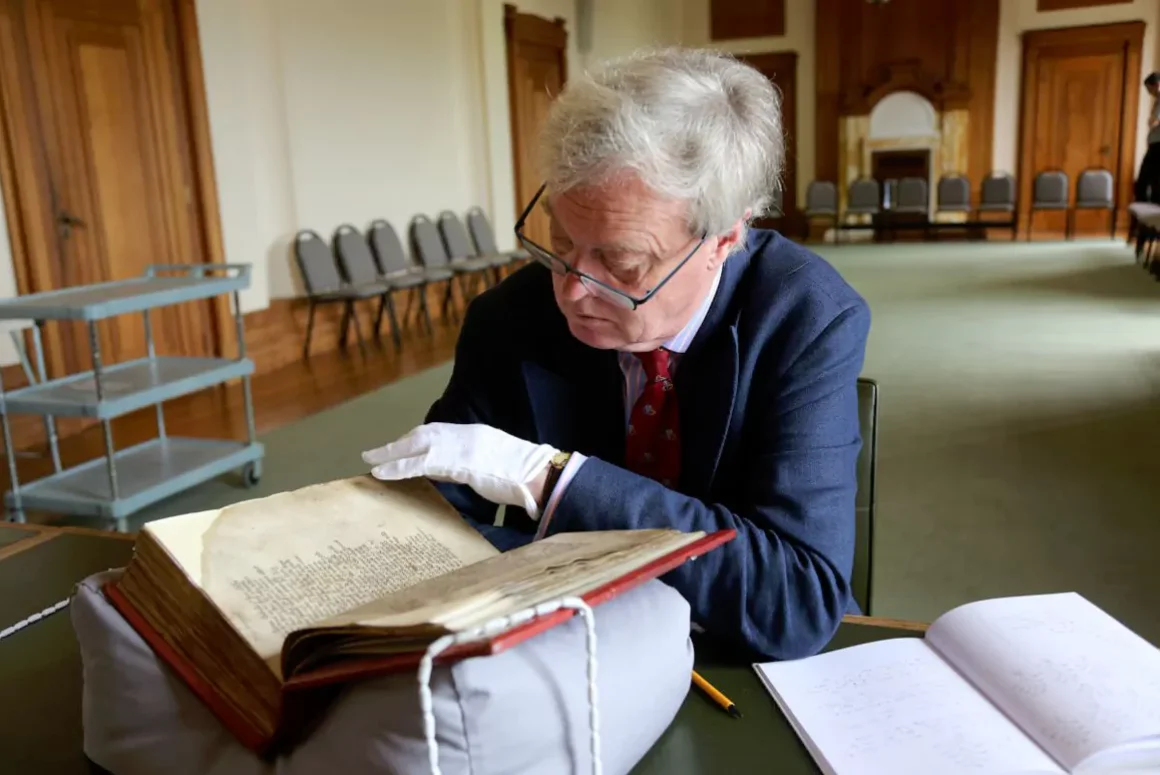![]()
Two of the National Library of Wales Chaucerian treasures have enjoyed world-wide acclaim during the last few months.
National Library of Wales most famous English manuscript, the late 14th- or early 15th- century Hengwrt Chaucer (Peniarth MS 392) was selected by Christopher de Hamel for inclusion in his Meetings with Remarkable Manuscripts (Penguin, Allen Lane, 2016), published in September, and thereafter shortlisted for the Waterstones Book of the Year.
Sharing the stage with twelve of the world’s top medieval manuscripts – including the Codex Amiatinus and The Book of Kells – our celebrated manuscript of the Canterbury Tales, which may be the earliest extant version, is examined, discussed, and survives the experience relatively unscathed.
Christopher met and examined the manuscript here at the Library in 2015, and also made use of the beautiful images which are available to all on the Library’s website.

Our second Chaucerian celebrity, a lesser-known gem known as Troelus a Chresyd (Peniarth MS 106), was discussed by our Chaucerian champion, Sue Niebrzydowski of Bangor University, in a blog on the Global Chaucers platform in November.
The tragedy of Troilus and Cressida’s doomed romance was dramatized by Shakespeare at the beginning of the 17th century, and around the same period, an anonymous dramatist wrote a Welsh-language play based on Chaucer’s Troilus and Criseyde as well as Henryson’s Testament of Cresseid. The Welsh Troelus a Chresyd survives in only one manuscript, written in the distinctive hand of John Jones of Gellilyfdy, Flintshire, a scribe who spent many hours transcribing texts in London’s debtors’ prisons before his death in 1658.
A common bond between both Chaucerian manuscripts is their crucial preservation, during the mid 17th- century, on the shelves of Robert Vaughan’s remarkable library at Hengwrt, Meirionnydd. It seems that in 2017 – 350 years after his death – Vaughan’s legacy is truly one of international significance.
For more information please visit: www.library.wales





